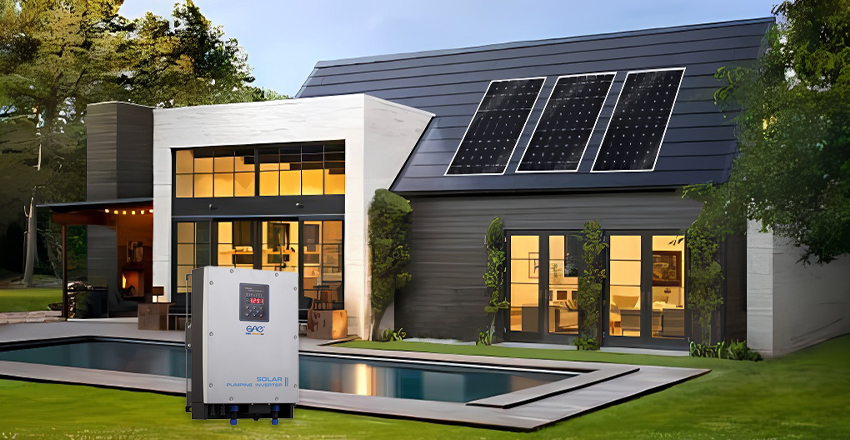As solar energy becomes an increasingly popular and sustainable energy source, homeowners and businesses are looking for ways to maximize the efficiency and effectiveness of their solar systems. One of the most innovative solutions in the solar energy industry is the use of microinverters. Unlike traditional string inverters, which convert the energy from multiple solar panels at once, microinverters are installed on each individual solar panel. This advanced technology offers several advantages that can significantly improve the performance and reliability of your solar power system. In this blog, we will explore how solar panel microinverters enhance solar power performance.

In a traditional string inverter system, multiple solar panels are connected in series, and the output of the entire system depends on the performance of the weakest panel. This means that if one panel is shaded, dirty, or underperforming for any reason, it can reduce the efficiency of the entire string.
Microinverters work by converting the power from each solar panel individually, meaning each panel operates at its maximum potential regardless of the performance of neighboring panels. If one panel is shaded or experiences a dip in performance, the rest of the system continues to perform optimally. This independent panel optimization increases the overall energy output of the system, maximizing the amount of usable solar energy and improving system efficiency.
Shading from trees, buildings, or other obstructions can significantly reduce the output of traditional solar systems. In string inverter systems, shading on even a small portion of one panel can lower the performance of the entire string of panels.
Because microinverters function on a per-panel basis, shading on one panel does not affect the rest of the system. If one panel is shaded, its microinverter will optimize its output independently, while the other panels continue to operate at full capacity. This enhanced performance in partial shading conditions ensures that the solar system continues to generate energy even under less-than-ideal circumstances, such as on cloudy days or in locations with inconsistent sunlight.
Traditional solar systems with string inverters are vulnerable to system-wide failure if the inverter or a key component malfunctions. A single issue with the string inverter can cause the entire solar system to stop functioning.
Microinverters provide increased system reliability because each panel operates independently. If one microinverter malfunctions, the other panels will continue to function normally, minimizing system downtime. This redundancy ensures that even in the event of a failure, the overall system performance is not significantly affected, resulting in fewer disruptions and more consistent power production.
Monitoring the performance of a solar system with a traditional string inverter can be challenging because the entire system’s performance is affected by the weakest panel. If one panel underperforms, it can be difficult to pinpoint which panel is causing the issue.
Microinverters enable individual panel-level monitoring, which provides a clearer understanding of each panel’s performance. With microinverters, you can easily monitor the energy production of each panel through an online platform or mobile app. If one panel is underperforming, you can quickly identify the issue and take action, whether it’s cleaning the panel, adjusting its position, or repairing the microinverter. This level of granular monitoring simplifies maintenance and ensures that your system is always operating at peak efficiency.
With traditional string inverter systems, expanding the system can be complicated because all new panels need to be integrated into the existing string, and the system’s performance can be limited by the capacity of the original inverter.
Microinverters make system expansion easier. Since each panel has its own inverter, you can add new panels to the system without worrying about the capacity of the original inverter. The microinverters allow for a modular system that can be easily scaled up or down, providing flexibility for future energy needs. This means that if you want to add more panels to increase your energy output, you can do so without making significant changes to the existing infrastructure.
Solar panel microinverters are revolutionizing the way solar energy systems are designed and installed. With individual panel optimization, improved performance in shading conditions, increased reliability, simplified monitoring, and expanded system scalability, microinverters offer numerous advantages over traditional string inverter systems. Their ability to enhance solar power performance, improve system efficiency, and provide added safety makes them an excellent choice for homeowners looking to maximize the benefits of their solar energy investments. By adopting microinverter technology, you can ensure that your solar system operates at its full potential, delivering clean, reliable, and cost-effective energy for years to come.